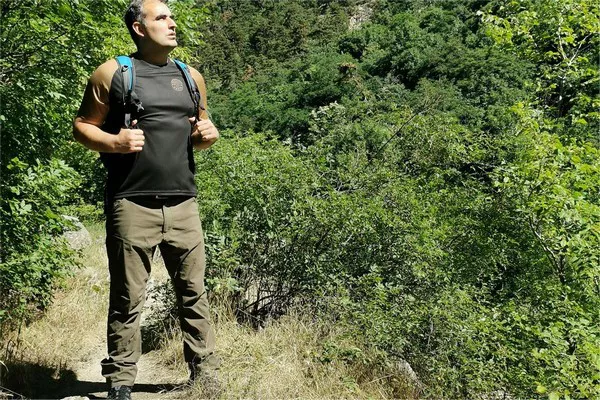Walking boots are a staple for anyone who enjoys hiking, trekking, or spending time outdoors. They provide the necessary support, protection, and comfort for your feet, making it easier to navigate various terrains. However, choosing the right clothing to complement your walking boots is crucial to ensure comfort, functionality, and style. This comprehensive guide will explore the best options for what to wear with walking boots, considering different weather conditions, terrains, and personal preferences.
Understanding the Importance of Appropriate Clothing
Before diving into specific clothing items, it’s essential to understand why wearing the right attire with walking boots is important. Proper clothing can enhance your walking experience by providing:
- Comfort: Ensures that you can walk for long periods without discomfort.
- Protection: Guards against environmental elements like sun, wind, rain, and insects.
- Performance: Improves mobility and reduces the risk of injuries.
- Versatility: Allows you to adapt to changing weather conditions and terrains.
Layering Basics for Different Weather Conditions
Layering is a fundamental concept in outdoor clothing. It allows you to adjust your outfit according to the weather conditions and your activity level. The three main layers are:
- Base Layer: This layer sits next to your skin and helps manage moisture.
- Mid Layer: Provides insulation and retains body heat.
- Outer Layer: Protects against wind, rain, and snow.
Base Layer: The Foundation of Comfort
The base layer is critical for moisture management. It should wick sweat away from your skin, keeping you dry and comfortable. Choose materials like merino wool or synthetic fabrics for their moisture-wicking properties.
- Merino Wool: Naturally breathable, moisture-wicking, and odor-resistant.
- Synthetic Fabrics: Lightweight, quick-drying, and excellent at wicking moisture.
Examples of base layer clothing include:
- Tops: Long-sleeve or short-sleeve shirts made of merino wool or synthetic materials.
- Bottoms: Lightweight leggings or base layer pants.
Mid Layer: Insulation for Warmth
The mid layer provides insulation, retaining body heat to keep you warm. The choice of mid layer depends on the weather conditions and your activity level.
- Fleece Jackets: Lightweight, breathable, and provide good insulation.
- Down Jackets: Excellent insulation and compressibility, ideal for cold conditions.
- Synthetic Insulated Jackets: Good warmth and moisture resistance, suitable for wet conditions.
Outer Layer: Protection from the Elements
The outer layer shields you from wind, rain, and snow. It should be waterproof, windproof, and breathable to ensure comfort in adverse weather conditions.
- Hardshell Jackets: Fully waterproof and windproof, ideal for heavy rain and snow.
- Softshell Jackets: Water-resistant and breathable, suitable for light rain and high activity levels.
- Rain Jackets: Lightweight, packable, and designed specifically for rain protection.
Choosing the Right Pants
The choice of pants is equally important when pairing them with walking boots. Consider the following options based on the weather and terrain:
- Hiking Pants: Lightweight, breathable, and quick-drying. Look for pants with articulated knees and gusseted crotch for better mobility.
- Convertible Pants: Can be converted into shorts, offering versatility for changing weather conditions.
- Leggings/Tights: Ideal for milder weather and provide a comfortable fit.
- Insulated Pants: Provide additional warmth for cold weather hiking.
Ensure that the pants are long enough to cover the top of your walking boots, preventing debris from entering your boots.
Selecting Appropriate Socks
Socks play a crucial role in maintaining comfort and preventing blisters. The right socks should provide cushioning, moisture-wicking properties, and a good fit.
- Merino Wool Socks: Naturally moisture-wicking, breathable, and odor-resistant.
- Synthetic Socks: Quick-drying and excellent at wicking moisture.
- Compression Socks: Provide support and improve circulation, ideal for long hikes.
Avoid cotton socks as they retain moisture, increasing the risk of blisters.
Accessorizing for Functionality and Comfort
Accessories can enhance your walking experience by providing additional protection and functionality.
- Hats/Beanies: Protect your head from sun or cold weather.
- Gloves: Keep your hands warm in cold conditions.
- Gaiters: Prevent debris, snow, and water from entering your boots.
- Sunglasses: Protect your eyes from UV rays and glare.
- Backpacks: Carry your essentials, including water, snacks, and extra clothing layers.
SEE ALSO: Exciting Launch of Hilltop Bike Park Marks Start of Thrilling Season
Adapting to Different Terrains
Different terrains require specific clothing considerations to ensure comfort and safety.
- Mountain Terrain: Opt for durable, abrasion-resistant clothing and consider layering for changing altitudes and weather conditions.
- Desert Terrain: Choose lightweight, breathable fabrics with UV protection to stay cool and shield your skin from the sun.
- Forest Terrain: Wear long sleeves and pants to protect against insects and brush. Consider moisture-wicking and quick-drying materials for humid conditions.
Styling Tips: Combining Functionality with Fashion
While functionality is paramount, you can still maintain a sense of style. Here are some tips for looking good while staying practical:
- Color Coordination: Choose colors that complement each other. Earth tones, muted colors, and classic outdoor shades like green, brown, and navy are always a good choice.
- Fit: Ensure your clothing fits well. Avoid overly baggy clothes as they can be cumbersome, but also avoid tight clothing that restricts movement.
- Layering with Style: Layering doesn’t have to be bulky. Choose slim-fitting base layers, tailored mid layers, and well-designed outer layers that offer a streamlined look.
- Accessorize Smartly: Use accessories like hats, scarves, and gloves to add a touch of personal style while maintaining practicality.
Conclusion
Choosing the right clothing to wear with walking boots involves a balance of comfort, functionality, and style. By understanding the importance of layering, selecting appropriate materials, and considering the specific demands of different terrains, you can ensure a comfortable and enjoyable walking experience. Whether you’re trekking through mountains, strolling through forests, or exploring deserts, the right attire will enhance your performance and keep you protected. So, lace up your walking boots, gear up with the right clothing, and embark on your next adventure with confidence.

